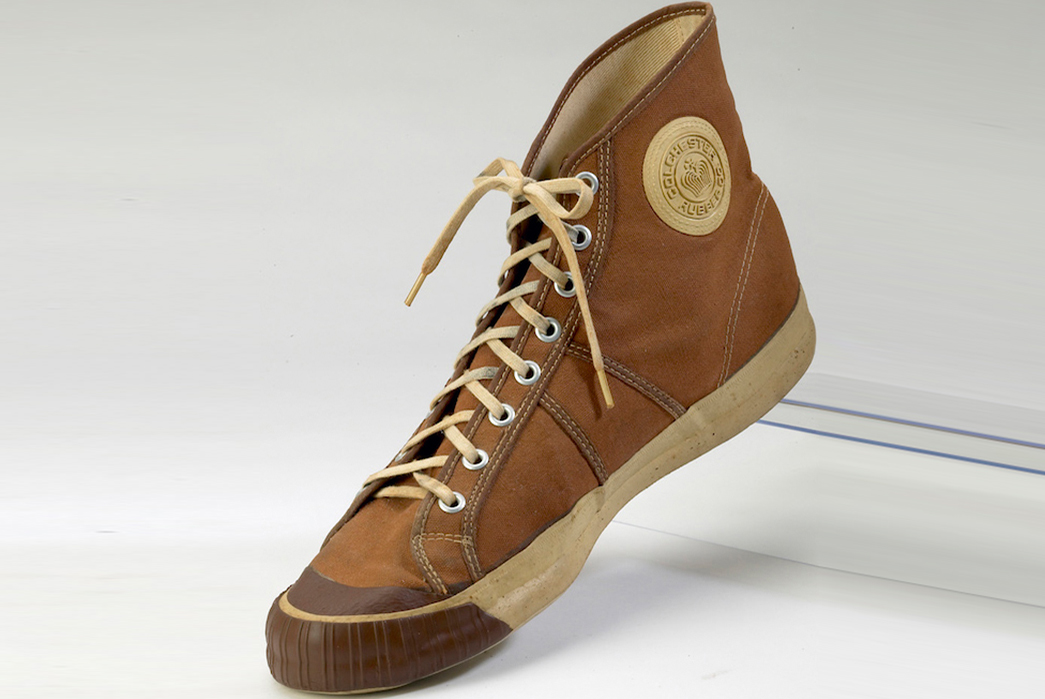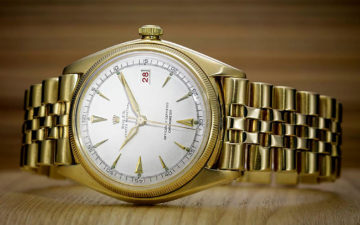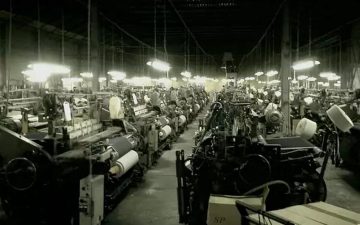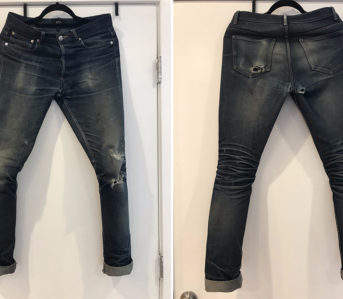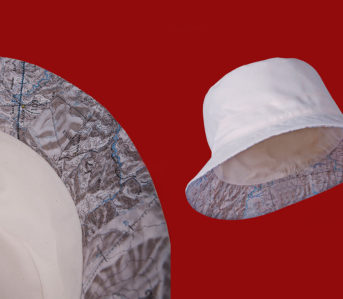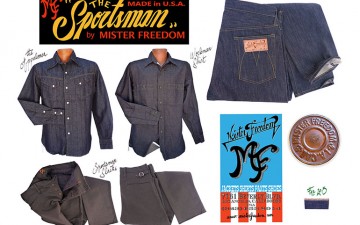Many of today’s most popular sneaker silhouettes have a historical lineage and links to popular sports. Whether it’s a Jordan, the Stan Smith or the Chuck Taylor, these sneakers are inextricably linked to the world of sports and those athletes who paved the way for future generations on the court, field or track. Many brands claim to have been ‘the first’ or the originator, the groundbreaker.
In 2016, a new (old) brand entered the market and laid claim to having made the first basketball sneakers. A fairly brave statement in a world of industry giants like Converse. A few years prior to the brand entering the market, a vintage sneaker was unearthed from the bottom of a closet at an estate sale in Vista, California. The sneakers were a very early basketball shoe—pre-1900s—and were made from hemp fabric and a solid hard-carved slab for the sole. They were in a murky light brown or ‘dead grass’ colorway as the Victorians referred to it and the brand name on the side of the sneakers, was Colchester Rubber Co.
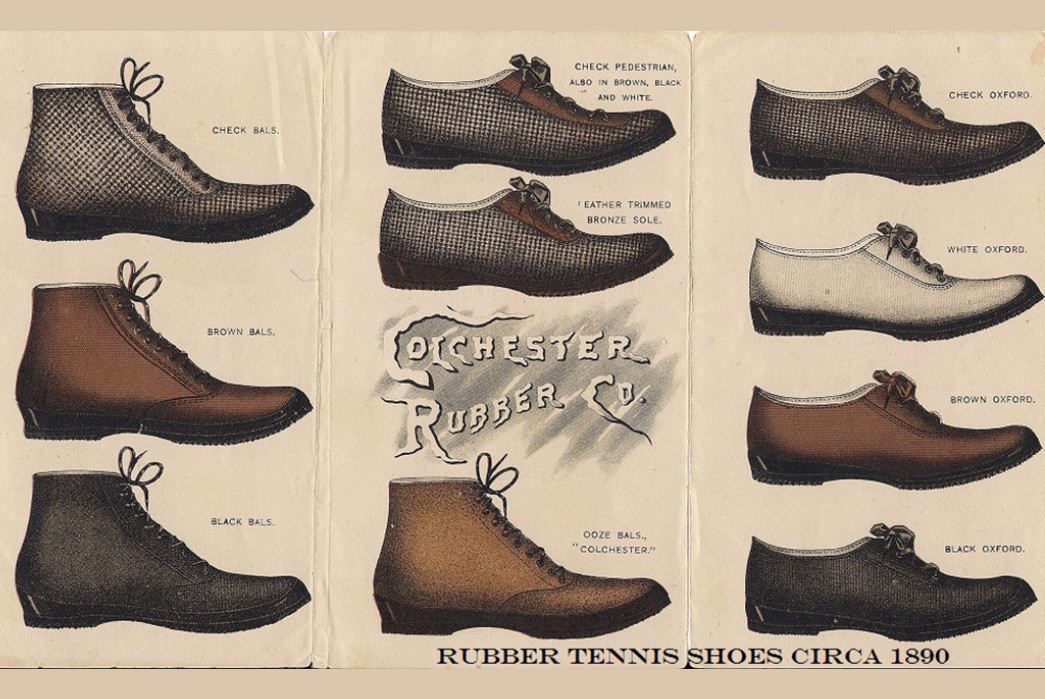
An example of Victorian-era advertising from Colchester Rubber Company to promote their ‘Rubber Tennis Shoes’ in 1890.
Today, the brand has been revived and is run by a group of ‘vintage sneaker and history folks’ who have worked in the industry in different capacities for many years. Brought together by a willingness to resurrect the brand and a desire to develop a historical reproduction sneaker for the heritage market, Colchester Rubber Co has entered the scene at a time when there has never been as many sneakers. And with brands like Keds, Converse, and PF Flyers, as well as Japanese competitors Moonstar, Shoes Like Pottery and RFW, it was never going to be easy for a new brand to muscle its way into the market.
At the most recent New York Denim Days, I met Brad Jaco and sat down to ask him some questions on the process of brand reincarnation, sneaker production and the process of getting that reproduction ‘right’. Brad gives an insight into the struggles of small business and getting product off the ground, as well as an insight into the history of the brand and why the Victorians ended up shooting hoops.
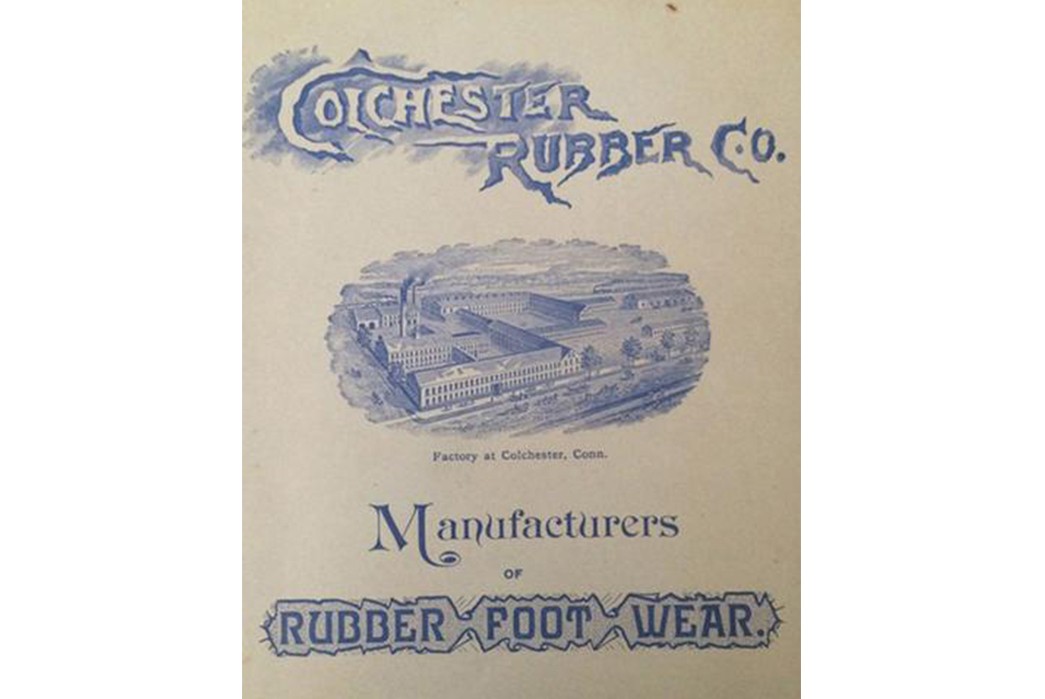
Another vintage advertisement from Colchester Rubber Company – ‘Manufacturers of Rubber Footwear’
Heddels: How did you come to work for the brand? What’s your background in the industry?
Brad Jaco: I owned a multi-brand showroom for many years, more specifically I was working with L.C. King mfg / Pointer Brand as well as Lucchese western boots when I first became aware of Colchesters. There wasn’t a sneaker out there for a consumer that appreciates heritage brands so I quickly became involved in the brand.
H: Tell us how Colchester Rubber Co was established. What’s the story?
BJ: Colchester Rubber came about in 1888, when George Watkinson opened his own rubber shoe factory at the old Hayward Rubber plant (opened from approx. 1847- 1865) in Colchester, Connecticut. He and his son, Irving Watkinson, sold high-end footwear for the time, including rubber boots, ladies walking shoes, children’s tennis shoes and sporting footwear for bicycling, baseball and so on. It was a really exciting time for footwear as designs were becoming less crude; ornate, more comfortable/practical shoes were becoming in vogue. Colchester Rubber was a proud manufacturer and you can see that in their detailed, hand-drawn advertisements that pay homage to that fact.
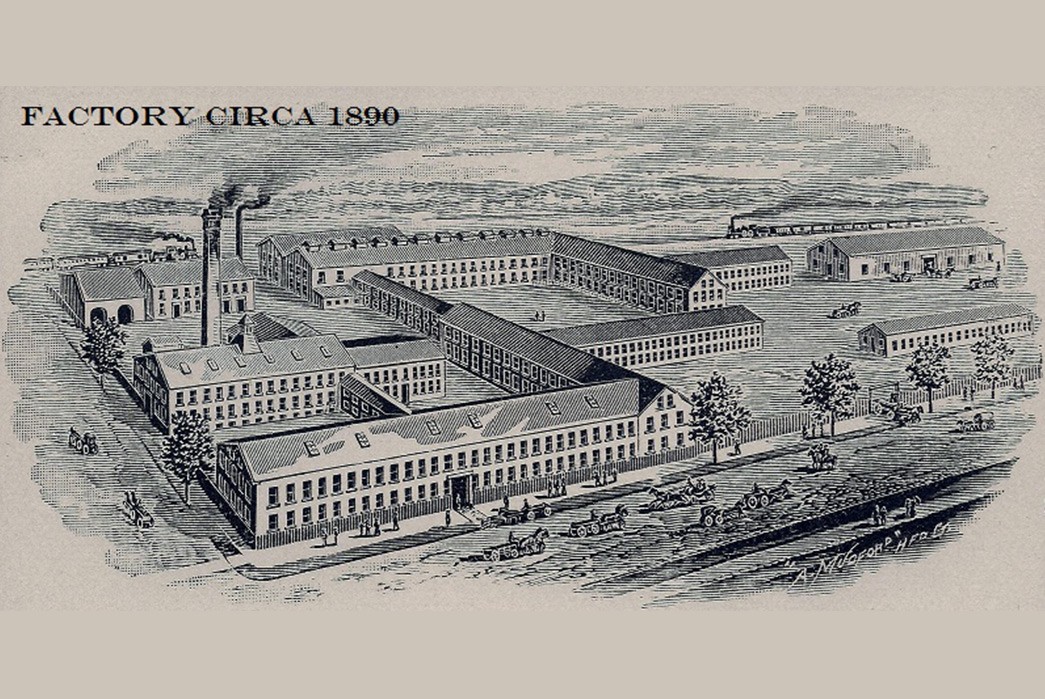
Period drawing of the Colchester factory.
H: Many of us wouldn’t think of basketball being a legitimate sport in the 1890s. What’s the deal with the Victorians shooting hoops?
BJ: Basketball was founded in 1891 by Dr. James Naismith. Naismith taught young men at the local YMCA in Springfield, Mass. (50 miles away from the Colchester Rubber factory) and was looking for a game that could be played inside during the cold winter. He wrote up the 13 rules of basketball and the rest was history. The original basketball hoop was a peach basket! The game caught on quickly, becoming a hit. Male and female basketball teams began forming at colleges across the country.
H: How difficult was it to research the original brand and require the rights, etc.? Was there much information out there?
BJ: The trademark for Colchester Rubber Co. had long expired, as the company was bought out in 1893 by the company now known as Keds and was shuttered after the buyout. There was a bit of research to be done because we had no clue where this mysterious pair of sneakers had even come from and to find out about this forgotten history was incredible. Through the years, we have acquired information and merchandise from the Colchester Rubber factory through antique dealers and other sources. Our favorite pieces include a hand-painted wooden crate from 1890 that was used to store shoes at shops, purchase orders, and Colchester Rubber Co. catalogs. The detail on the graphics is just incredible. We even visited the friendly town of Colchester twice, even walking the factory ruins (the factory burned down in the early 1900’s) you can still see some of the old piping and foundation amongst the overgrowth.
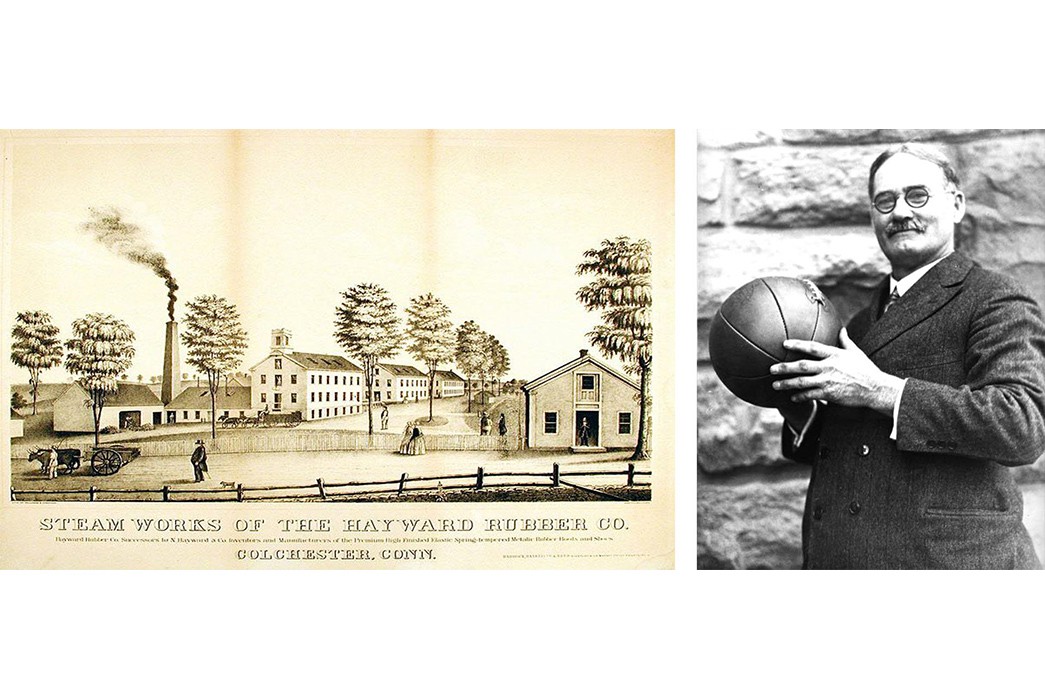
H: From finding the vintage sample in 2004 and taking the decision to go ahead with the idea to re-establish the brand, how long did it take to get the first sneakers through production?
BJ: Immediately it was decided that these shoes were just too cool to be kept hidden away. We knew we had to bring these classics to a new generation of folks, whether they love sneakers, American history or basketball. Manufacturing footwear has its challenges. We created our first prototype around 2006, but with the recession coming soon after, we actually lost an entire shipment when a factory up and closed during that time frame. We restarted our efforts in 2016 after a few hard lessons, it takes honest people that truly care about a brand to make it happen….anyone who has launched a brand can tell you there are some unsavory sharks out there so still learning that lesson today.
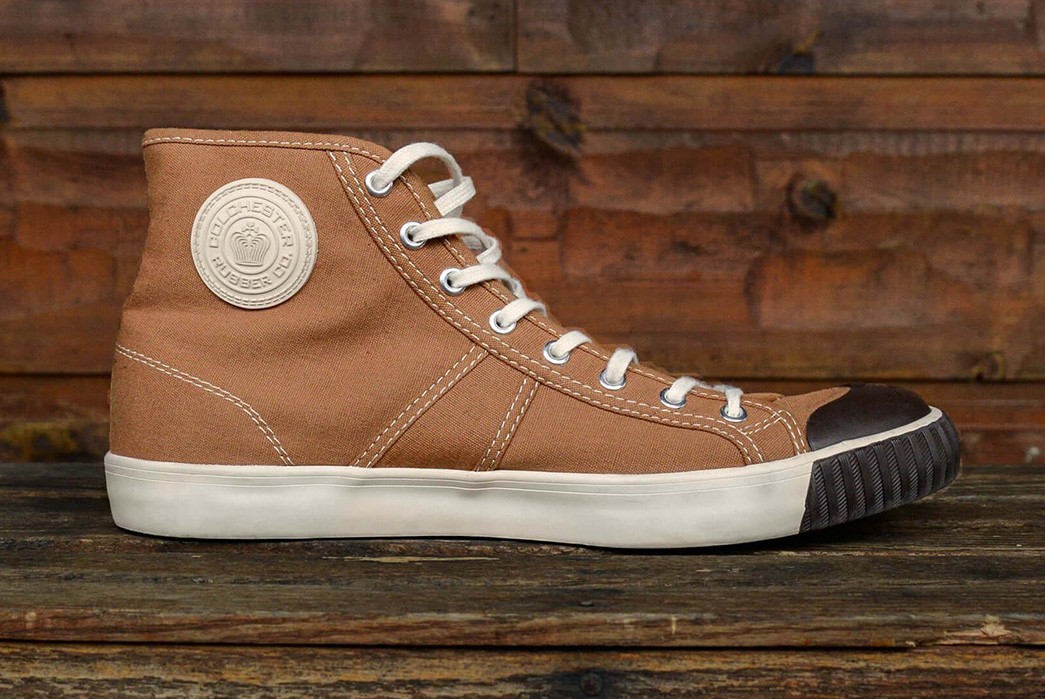
The 1892 National Treasure High Top in Deadgrass colorway.
H: What were the materials like on the original example and did you feel like you had to change/upgrade anything to have them meet today’s sneaker standards?
BJ: The original sneaker was made of hemp fabric and a solid, hand-carved slab for the sole. While hemp is nice, canvas is a much more practical material for everyday wear. Getting that accurate dead grass (this is what the Victorians called this tone of color) coloring proved difficult and involved a lot of samples to get the Pantone color just perfect. Our canvas is hand-dyed, so it is very custom and unique to anything else out there. The solid sole was also not practical for modern wear; the original pair is very heavy. We had to modernize the sole to make the sneaker lighter as well as add a comfort arch.
H: Detail and historical accuracy are clearly key for the brand (down to the Victorian-era tissue paper the shoes come wrapped in). How difficult was it to get all this ‘right’?
BJ: We are a little OCD on making sure our product is historically accurate. Coming from a vintage background, little details that are inaccurate drive us crazy, so we make sure that our shoe represents the time period it was originally designed in—circa 1892. Getting the original dead grass color just perfect took a bit of time as it is an unusual color. When we finally got it right it was a big relief. We made a scan of an old newspaper at the Colchester, Connecticut local library to create the tissue paper. Our other colors we carry for the Colchester line are still accurate Victorian-era colorways and complement the dead grass sneaker.
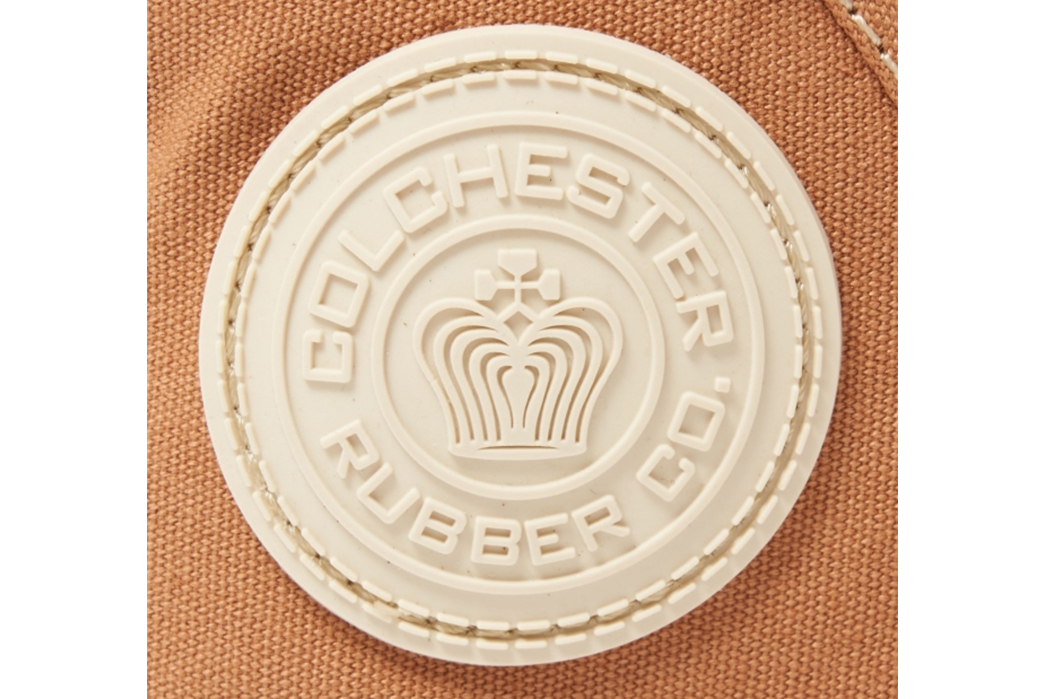
Branding on the 1892 National Treasure High Top inspired by the vintage sample.
H: In a market which is already flooded with sneakers, what made you think there was a space in the market for Colchester Rubber Co?
BJ: Being the very first basketball sneaker ever created, I think it is important for people to know about sneaker history and our shoe was one of the very first. And a classic is always cool.
H: What makes the sneakers themselves unique in comparison to other models on the market? (Converse, Keds, PF Flyers, etc)
BJ: Colchesters were the very first, the only basketball sneaker created in the 1800s, so it’s a pretty unique shoe. Wearing something that was first crafted in the 19th century is pretty crazy to think about. Our sneakers also have the turkey feather sole pattern—when you hold the shoes together, it creates a large turkey feather. We also stick to classic colors and styles—no crazy patterns here. We think these brands are important to sneaker history and many of our customers like to collect all the brands.
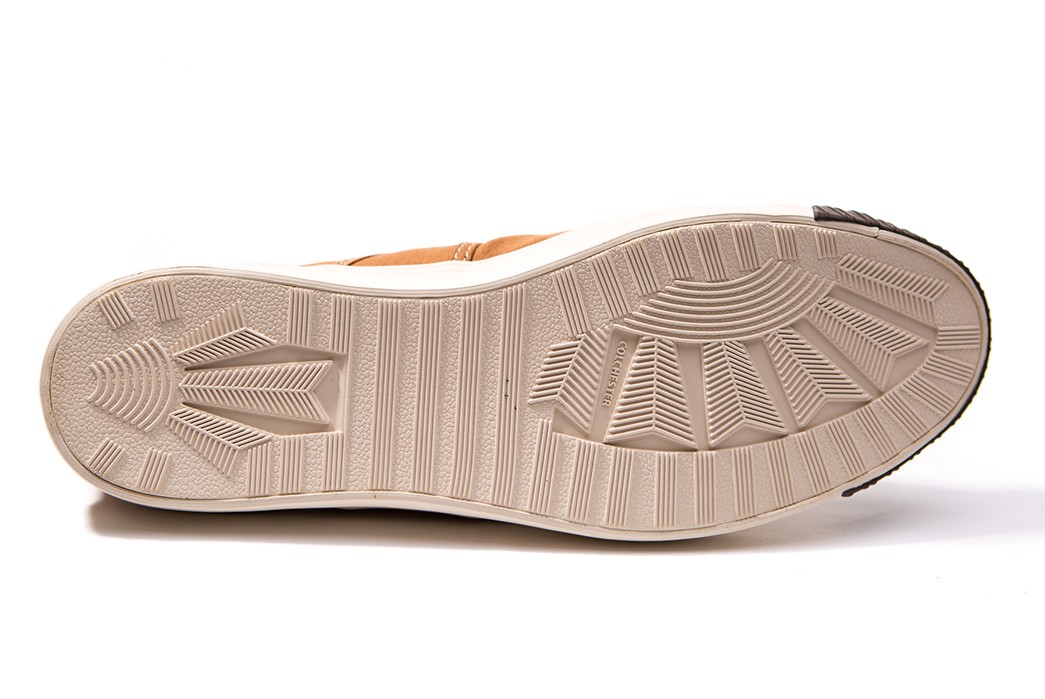
Sole unit used on the high top and low top.
H: Where are the sneakers currently made and what’s the production process like?
BJ: As the majority of factories have shuttered across the USA, our shoes are currently manufactured overseas at a small, family-owned factory we have visited several times. Our duck canvas is hand-dyed, making colorways unique and one-of-a-kind for each run. Shoe production takes about 2-3 months to complete after the initial order.
H: In addition to the production process, can you tell us more about the factory(ies) you’re using? What’s their history, how did you settle on this factory?
BJ: We have known our factory liaison for over ten years. They are a small, family-owned factory based out of Hong Kong, whom we find creates a much better product than a mainland factory. They are able to work with our smaller orders as they are a smaller factory and I think that translates well to the quality and integrity of the product. We settled on them after previously using much larger factories and noting the variances in quality and communication levels. There has to be a huge level of trust and confidence when manufacturing footwear, we are also currently looking into manufacturing in the U.S.
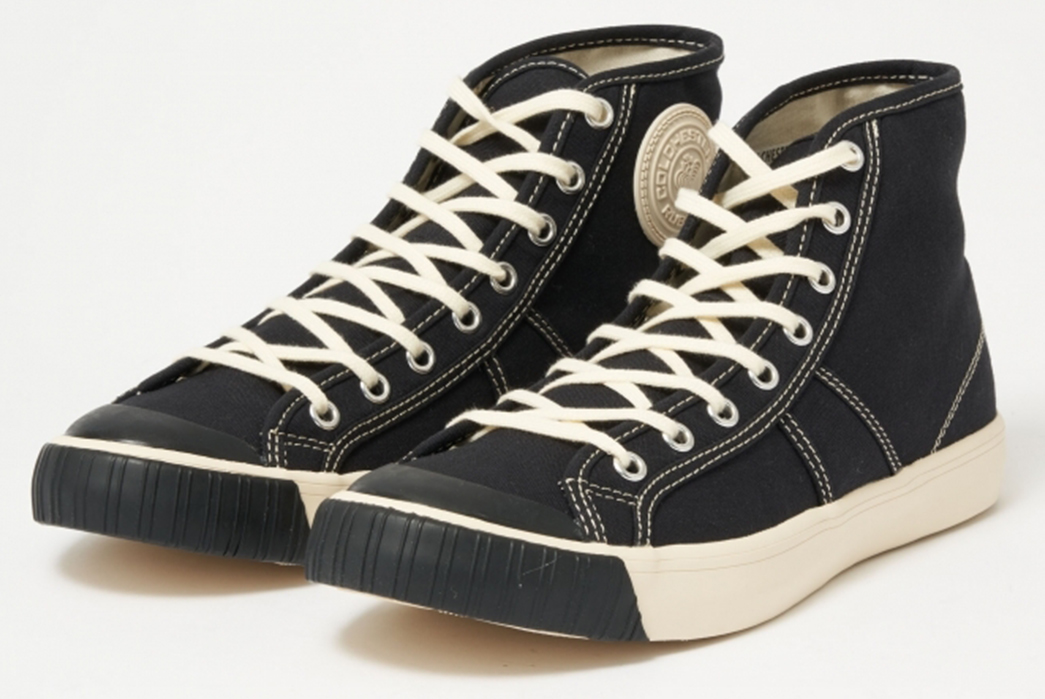
The 1892 National Treasure High Top in Coal Black
H: You currently offer a high-top and low-top model in a variety of colorways. Is there any room for expansion and do you have any new models in the works?
BJ: Yes indeed, a very exciting and important project that will be launched for Spring of ‘20… but mums the word for now.
H: Did the originals come in several colors as well?
BJ: Not that our research can find. They seem to have only existed in the dead grass color. Dead grass was a popular color during the Victorian era, often used for hunting as the color blended in with—you guessed it—dead grass.
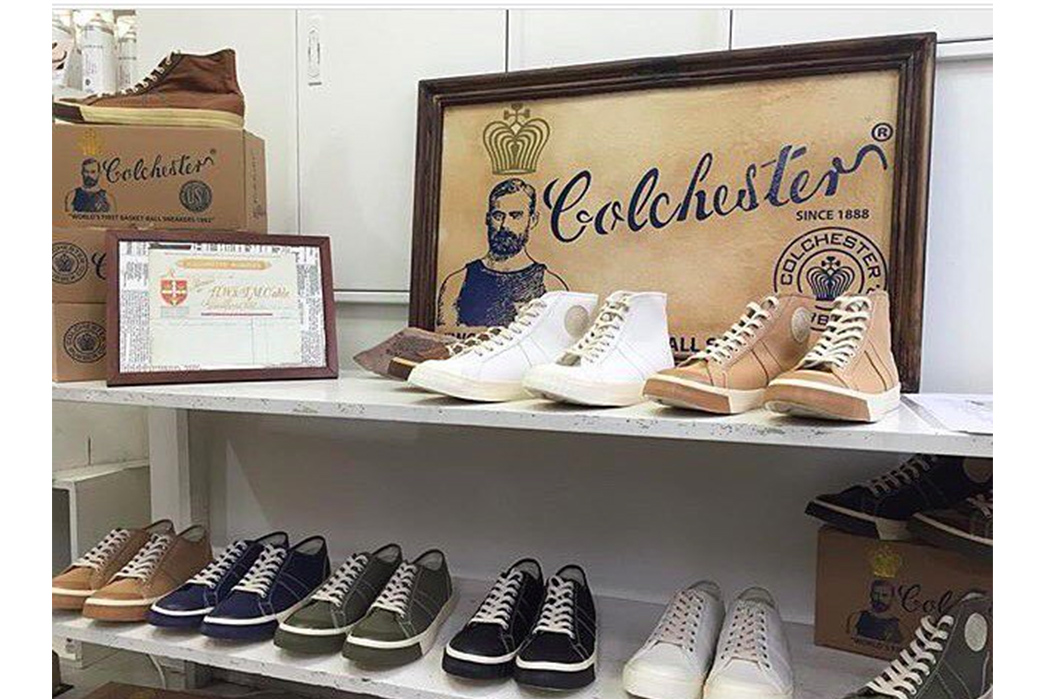
A selection of the current Colchester Rubber Company offering.
H: You’re already in a number of stores worldwide, how was were retailers of the brand selected and what was the initial reception like when you entered the market?
BJ: We wanted to start out with small curated shops that reflected our quality and goals. We have had a wonderful reception and it has been great to connect and meet people from all over the world, learning their story and telling them ours. We are looking forward to showcasing at more trade shows and partnering with select retailers and consumers. Currently, the widest selection can be found at Colchesters.com
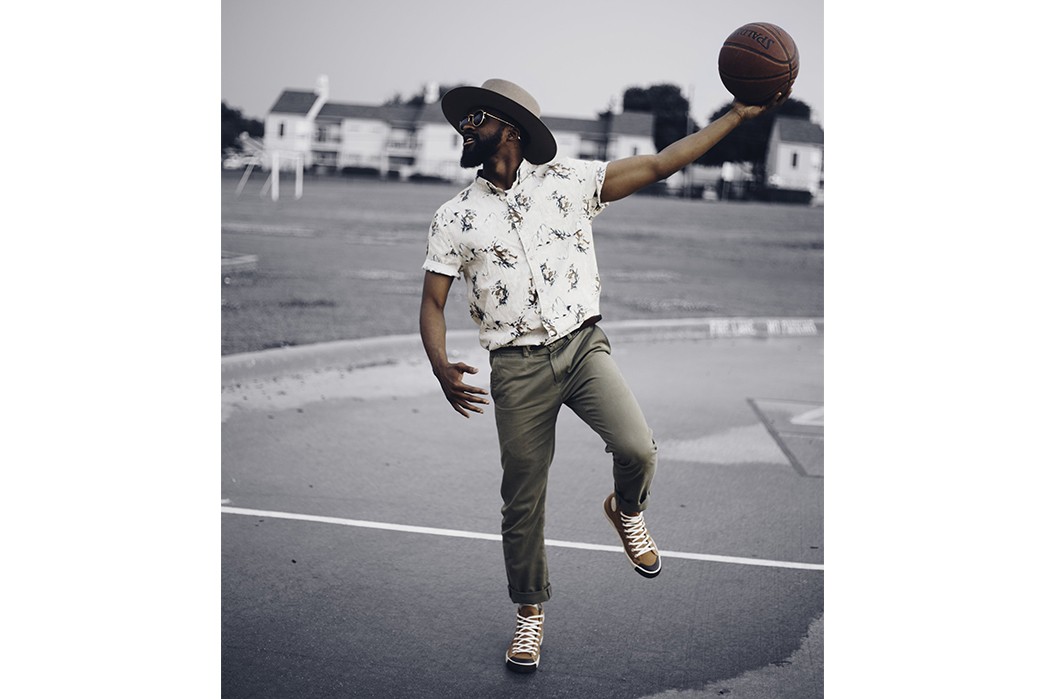
Shooting hoops in style.
H: What is next for the brand and how might the future look? Anything you’re working on at the moment that you’d like to share?
BJ: For the future, we will continue to create brand awareness, partner with retailers and tell folks about Colchester’s historical story. Right now we are working on fine-tuning the brand and expanding our demographic. It has been a blast researching Victorian fashion choices and digging deeper into the history. We like to consider ourselves the only 19th-century sneaker historians.
H: Where can we find out more and keep up-to-date with Colchester Rubber Co?
BJ: Our Instagram is very active (@colchesterrubberco). We also post on Facebook (@colchesterrubberco) and Twitter (@colchesters) on our website, Colchesters.com. We also have photos of the original pair, the back story and some other blog posts on Victorian-era happenings and sneaker history.
